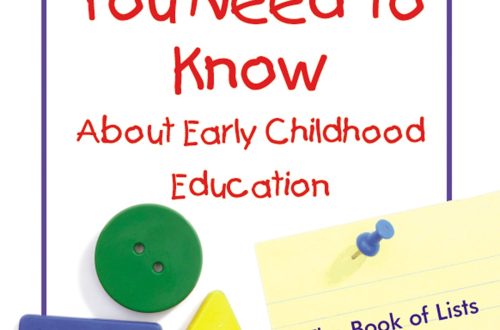The Child Who is Different – A Description of Nonverbal Learning Disorder
[ad_1]
NLD: Nonverbal Learning Disorder
You know him. He’s the one that sits at his desk during recess, reading rather than going outside to play ball with his classmates.
She’s the one that makes foolish remarks when she’s with friends. She’ll say something that is exaggerated or irrelevant to the topic at hand.
He’s awkward, always bumping into things.
Her handwriting is illegible and she’s weak in math.
These are children who suffer in school and out. They’re labeled “nerds” or described as “strange.” They try to fit in, but they don’t; worse yet, the more they try, the more they fail. Their self-esteem drops, they feel rejected and lonely, and are at risk for emotional problems.
The cause of their problems is a little-known learning disability called NLD, or Nonverbal Learning Disorder. This disability is often unrecognized because those who have it are usually verbally precocious and are thought to be equally capable in all areas. In turn, parents and educators (who are unacquainted with NLD) don’t understand the reason for the child’s awkwardness or poor performance. They presume that the cause is “laziness” or boredom. Hence, years may pass before these children receive an accurate diagnosis if they do at all.
Neurological Origin
The hemispheric specialization of the brain explains the origins of Nonverbal Learning Disorder. The left hemisphere of the brain is the seat of verbal information processing. The right hemisphere, in contrast, is specialized to process visual-spatial as well as emotional information. The right hemisphere’s functions are interwoven. As Dr. Wendy Heller of the University of Illinois points out, “It requires complex visual-spatial processing to decipher the meaning of a facial expression or to understand a series of complex gestures.”1
Assessment of individuals with NLD indicates a neurological dysfunction which affects the systems within the right hemisphere of the brain. The result is the observed discrepancy between their verbal and visuo-spatial/social skills.
Characteristics
Children with NLD have learning profiles that are characterized by strength in the verbal area and marked weakness in nonverbal functioning. The differential between these abilities leads to significant impairment in their social and academic performance.
Noteworthy is a deficiency in visual-spatial organization. Children with this learning disability often demonstrate relatively poor achievement in specific academic areas, such as mathematics, science or reading comprehension. In the early grades they may have difficulty with handwriting and cutting because of poor fine motor skills.
One of the most salient consequences of having NLD is the impairment in social functioning. Few of us realize how much of our social interactions are based on our understanding of the nonverbal cues of communication. Eye contact, hand gestures, tone of voice, body language, and posture are some of the many signals to which we attend when we speak with someone else.
Children that miss the nonverbal cues of communication2 often feel uncomfortable with their peers and may gravitate toward adults, who admire their broad knowledge, or to younger children, who will gladly take direction from them.
Lastly, children with NLD may display attentional problems such as distractibility and difficulty concentrating. Accordingly, they may be diagnosed as having Attention Deficit Disorder. Although AD/HD can co-occur with NLD, they are not synonymous. It is thus crucial to obtain an accurate diagnosis.
Treatment
Children with NLD can benefit from the following:
1. Occupational therapy to develop their fine motor and visual-motor integration skills.
2. Social skills training – whether in school, at home, or within a therapeutic setting – as a means of learning effective communication and interpersonal skills.
3. Academic support in their areas of weakness.
4. Cognitive behavioral therapy or coaching techniques to help them cope with everyday challenges.
It is important that all interventions take place within the overall context of building the child’s self-esteem. Children with NLD have often experienced much negative feedback in a variety of situations. An important part of therapeutic treatment is to help them recognize their strengths and take pride in the achievement of new skills.
Not a Childhood Illness
Like all learning disabilities, NLD does not disappear with age. Children with NLD become teenagers and adults with NLD. Their neurological weakness can thus affect their personal and professional lives. Even adults with NLD can benefit from coaching that teaches them how to compensate for their weaknesses and utilize their strengths.
People with NLD are intelligent, reliable and often highly motivated to succeed. They need only garner support, understanding and mastery of unlearned skills to do so.
Recommended Books
Dr. Steven Nowicki and Marshall Duke have written two outstanding books on children with NLD:
Helping the Child Who Doesn’t Fit In (Peachtree Publishers, 1992).
Teaching Your Child the Language of Social Success (With Elisabeth Martin. Peachtree Publishers, 1996).
For adults with NLD:
What Does Everybody Else Know That I Don’t? By Michel Novotni (Specialty Press. 1999)
1 “Understanding Nonverbal Learning Disability,” by Wendy Heller, Ph.D.
2 According to the Dr. Steven Nowicki, “one of every 10 children has significant problems with nonverbal communication” (Monitor on Psychology, September 2006, p.37).
[ad_2]
Source by Dr. Mona Spiegel



